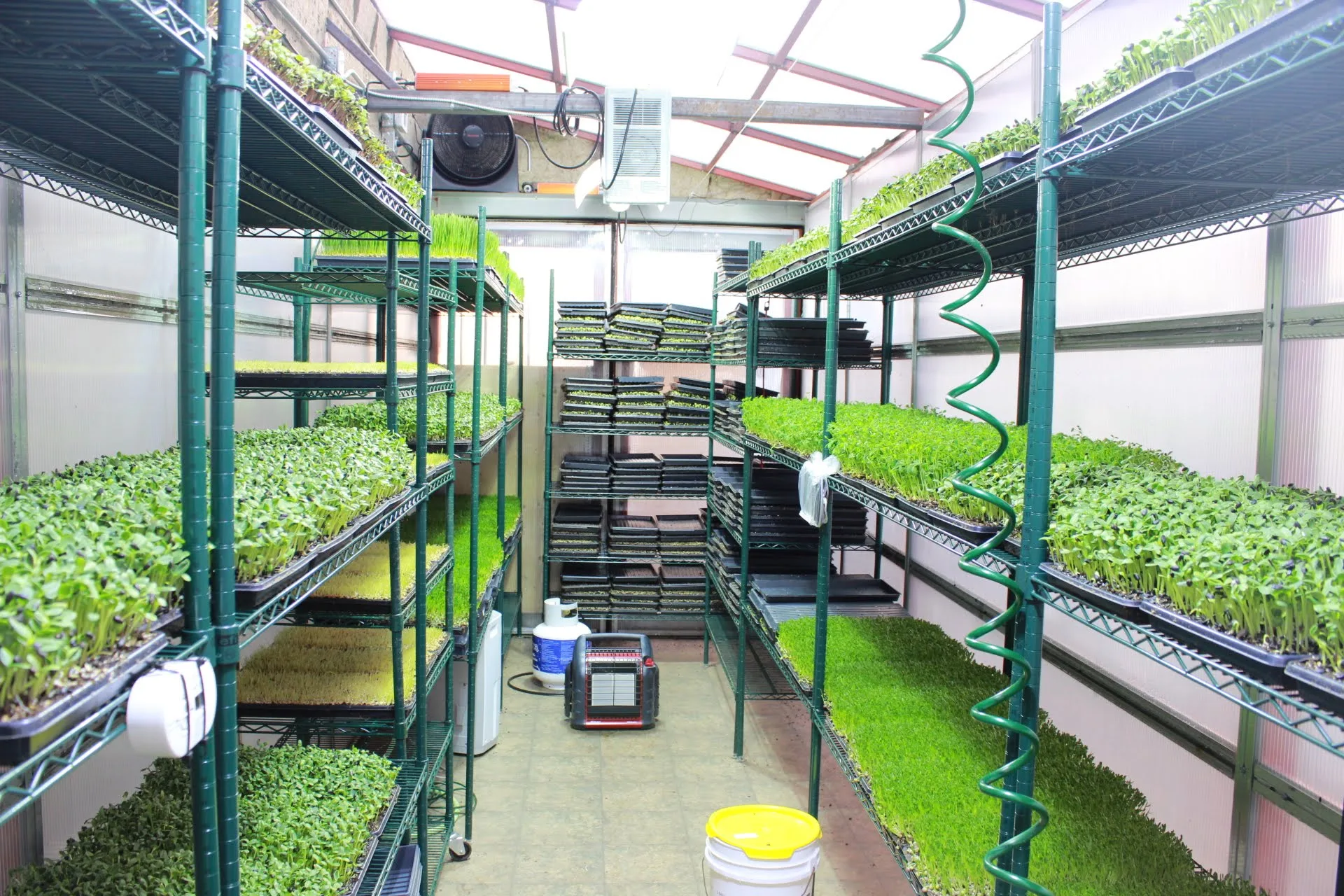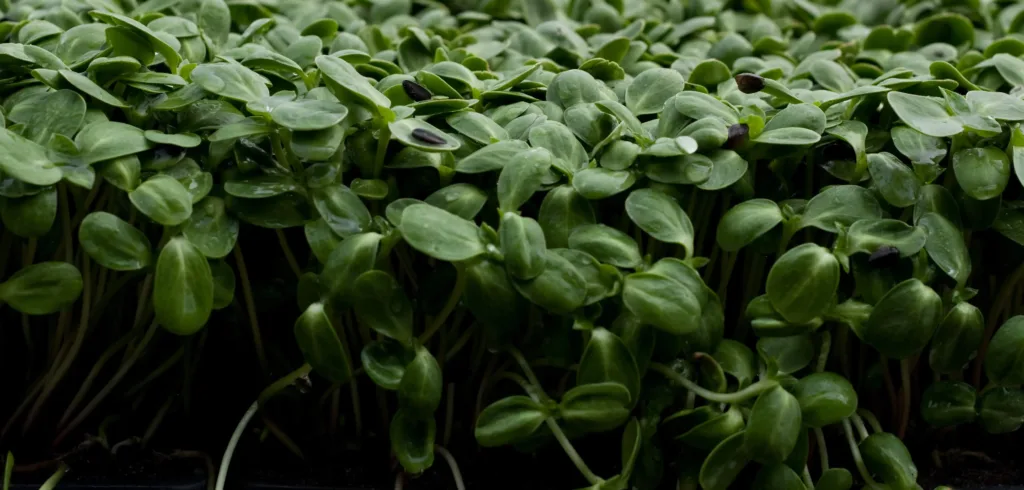
Are Microgreens Really Profitable? 15 Things You Need to Know Before Starting a Microgreens Business
Introduction
You’ve probably seen bold claims about making thousands of dollars a month growing microgreens. But let’s cut through the hype. The question we hear most often is: “Are microgreens profitable?”
The honest answer? It depends.
Profitability is not guaranteed just because microgreens grow fast and sell at a high price per pound. It takes planning, skills, and systems to make the business work.
Here are 15 key considerations that will determine your path to profitability:
1. Get Educated
Growing microgreens for personal use is a world apart from growing for market. Before launching a business, you need to understand:
- How to grow crops consistently at scale
- Food safety standards and certifications
- Your local zoning, bylaws, and licensing requirements
Learn through all available channels:
- Practice: Run small trials at home.
- Free online content: YouTube, blogs, Reddit.
- Paid courses: Look for ones taught by experienced growers (not just marketers).
- Online communities: Join microgreens forums and Facebook groups.
For growers in Canada, the FoodSafe Level 1 certificate is a solid baseline for food safety. For zoning and licensing, check with your municipality early—especially if you’re planning to grow at home.
2. It’s Not Just About the Microgreens
You’ll spend less time growing and more time managing the business. Expect to handle:
- Bookkeeping and invoicing
- Inventory and supply orders
- Deliveries and logistics
- Marketing and website upkeep
- Cleaning and sanitation
- Writing SOPs and systems for your team
Your crops may be flawless, but poor admin or inconsistent delivery will tank your business.
3. It Can Be Monotonous
Microgreens farming is repetitive. You’re filling trays, soaking seeds, harvesting, washing trays, over and over again.
If repetition wears you down, prepare strategies to stay motivated: good music, podcasts, or a strong team.
4. Build a Team
Solo growers often hit burnout. A team brings:
- Complementary skills (sales, tech, operations)
- Flexibility to take time off
- Better workflow efficiency
Even if it starts as a side hustle, build toward collaborative work. Teams help businesses scale.
5. Make a Business Plan
A business plan isn’t just a document for investors. It’s your chance to:
- Model your costs and pricing
- Forecast cash flow
- Identify your target customers
- Plan production capacity and scaling
This process alone will reveal whether profitability is realistic in your market and context.
6. Know Your Operational Costs
Obvious costs:
- Shelving, lights, trays
- Soil or growing media
- Seeds and packaging (e.g. clamshells)
Hidden costs:
- Paper towels and dispensers
- Cleaning chemicals
- Delivery containers and signage
- Farmers market booth setup
- Licensing and certifications
Labor is your biggest long-term cost. Even if it’s your own time, track it.
7. Track Your Overhead
Whether you grow 20 trays or 200, some costs don’t change:
- Rent or mortgage
- Utilities (especially lighting and HVAC)
- Insurance
- Website hosting
- Organic certification fees
Divide these by your tray count to understand your cost per tray. This affects your break-even point.
8. Price for Profit and Retention
Pricing isn’t just about covering your costs. You need:
- Enough margin to scale
- Pricing your customers can sustain long-term
Selling a $6 bag at $3 profit is great until your customer realizes it’s cheaper elsewhere. Balance fair pricing with product quality, service, and story.
As you scale, per-tray costs often drop, but that assumes your systems get more efficient.
9. Know Your Markets
Each market has its pros and cons:
| Market | Pros | Cons |
|---|---|---|
| Farmers Markets | High price point, direct feedback | Time intensive, weather dependent |
| Restaurants | Steady weekly orders, good margins | Delivery timing is strict, chefs rotate often |
| Grocers | Larger volume, brand visibility | Lower margin, packaging required |
| Subscription / Home Delivery | Predictable revenue, prepaid options | Complex logistics, customer service load |
| Wholesalers | High volume, simple logistics | Low prices, tight specs, delayed payments |
Diversification is your safety net. Start small, test a few channels, and double down on what works.
10. Market All the Time
Losing even one client can hurt. Constant marketing helps you:
- Replace lost clients
- Grow your volume
- Build your brand
Use social media, email newsletters, sampling, and customer referrals. Track results and refine your message.
11. Master Crop Planning
Crop planning is a cornerstone of profitability. You should know:
- When to sow what (based on harvest/delivery days)
- Expected yields per tray
- How many trays are needed to meet orders
12. Use the Right Tools
Know when manual systems no longer work.
- Subscription management: If you are offering a subscription program then a subscription management program can help keep customers and orders organized.
- Invoicing: There are now lots of invoicing programs available which allow customers to sign for receipt on your phone. The amount of time a good invoicing program can save is incredible.
- Bookkeeping: Find a program that links to your bank account allowing you to quickly categorize your revenue and expenses. Many free options are available.
- Google Analytics: To help you understand how effective your outreach and marketing are.
- Record keeping: Google Forms is a great option for logging tasks such as cleaning activities and seed sanitizing.
Start with free versions. Upgrade when time spent managing outweighs the cost of better tools.
13. Define Your Work Hours
Running a small business can blur the line between work and life. Set structured hours to:
- Improve focus
- Protect personal time
- Measure profitability per hour
Burnout is expensive. Time is your most limited resource.
14. Plan to Expand
Microgreens businesses often hit a growth ceiling.
- Limited space = limited income
- No time = no room to grow orders
Design your systems with expansion in mind:
- Double your harvests per week (e.g. Mon/Fri)
- Add vertical grow space
- Hire part-time help
Don’t let your setup limit your potential.
15. Find the Right Scale
How much you grow will determine your:
- Income potential
- Workload
- Overhead efficiency
You might not be profitable at 20 trays/week. You might be drowning at 300/week. There is a sweet spot where your systems, space, and sales align. Find it by testing and refining.
So, Are Microgreens Profitable?
They can be. But profitability isn’t a given.
It depends on:
- Your local market
- Your systems and planning
- Your ability to balance production with admin
- Your mindset and adaptability
The good news? If you approach microgreens like a real business, with clear goals, solid planning, and constant refinement, you can build something that’s both profitable and meaningful.
Ready to get started? Be sure to check out:
Success in microgreens isn’t about getting rich quick. It’s about growing smarter, not just growing bigger.

Leave a Reply